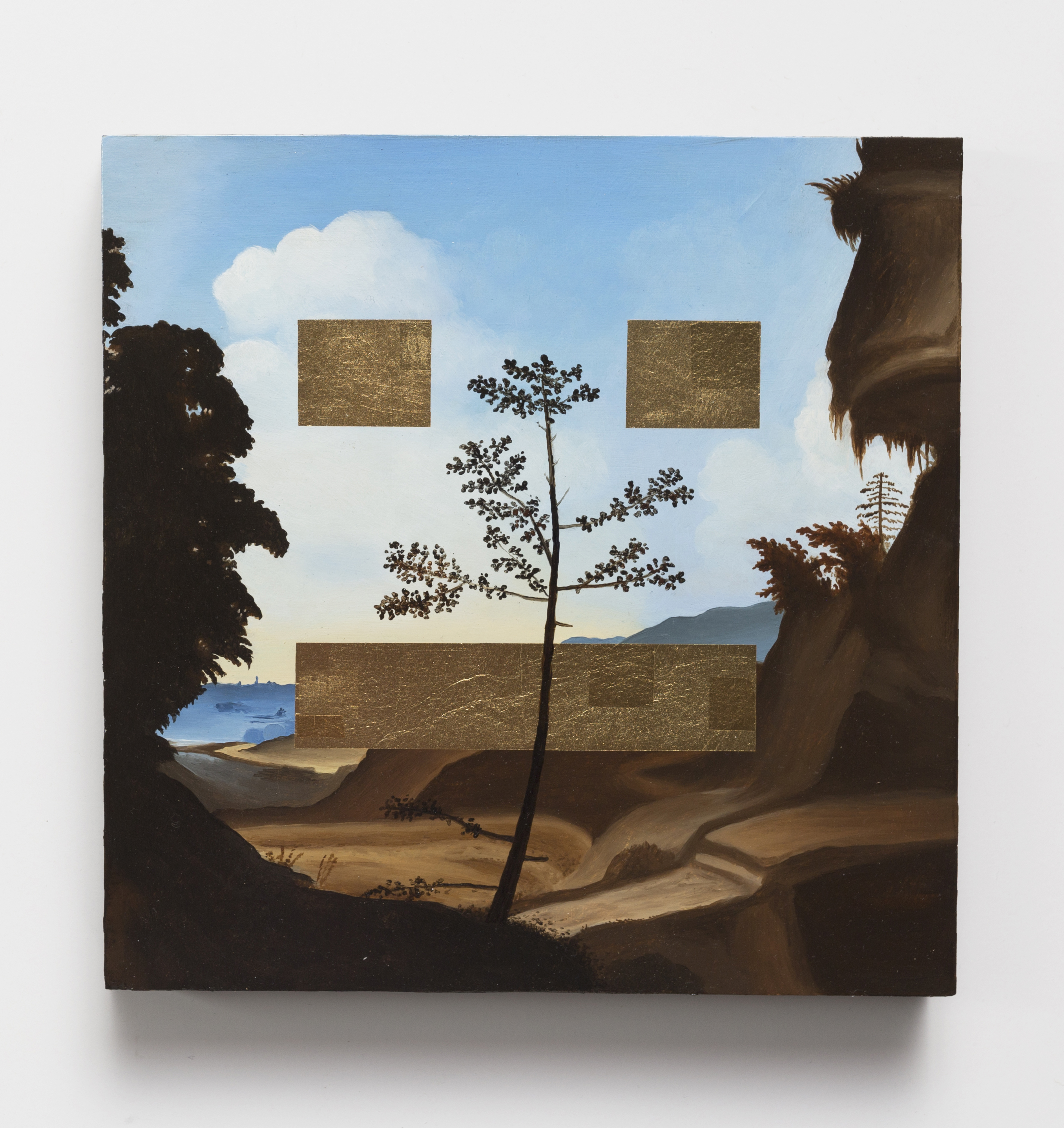Gómez Canle builds a work methodology that implies a local way of seeing, doing and understanding painting: he finds in the history of art and Western visual culture an infinite reservoir of images that he reinterprets, quotes accurately and combines with each other and with forms. own. In his works, the artist reproduces fragments, backgrounds and characters, sometimes from paintings from the Italian Renaissance as well as from the Flemish school that he finds in old art encyclopedias.
In his work Gómez Canle dislocates the known. He refers to paradigmatic works of the tradition of geometric abstraction of Argentine art and includes in his paintings allusions to elements such as video games or emojis; he exchanges historical references, mountainous landscapes that are populated or encountered with cut-out shapes to situations in which he desacralizes paintings of the past. Gómez Canle’s production can be thought of as a system or a single great work that continually adds episodes or new parts. His exhibitions usually present anthological formats and spiral chronologies where the artist reviews his previous works and, at the same time, projects his work towards new horizons.
Gómez Canle, a virtuoso artist of oil painting, is a student of ancient techniques that have fallen into disuse such as leaf gilding or painting on stone. He conceives the practice of painting as a reflection on painting itself and the forms of visuality throughout history. Between brush strokes, the artist poses questions or working principles that challenge the constitution of the painting, understood as the body of the image, and challenges himself to disrupt it or to direct the eyes of the viewer towards the frame. These are almost impossible goals that, however, result in a series of works that try to achieve them.
Gómez Canle’s work can be organized into series that the artist develops simultaneously throughout his more than twenty-year career. These series are identified by their protagonists, within the figuration, or by the procedure they carry out. In this sense, it is possible to identify series based on the mountain-monster-emoji character, the portraits of hairy characters, the geometric shapes inspired by the works of Roberto Aizenberg that inhabit flamenco landscapes and the works that play with the frame, the pieces that pierce the wall or works that pay tribute to the principles of Raúl Lozza’s perceptism, among others. The elements that allow these series to be ordered can also be recombined, cited or crossed with each other from work to work.
Gómez Canle’s production is generally displayed in small and medium easel formats or in sculptural pieces. Among his most recent works, however, you can see experiments with painting on a monumental scale, such as the piece Capricho sudamericano (2019) or on less common supports for oil painting, including the wall or cobblestones such as It was seen in Living like this, without words (2020, Ruth Benzacar). This last exhibition also proposes to the public an unusual behavior in the room and a different spatial relationship with the works.


 Gómez Canle Max
Gómez Canle Max